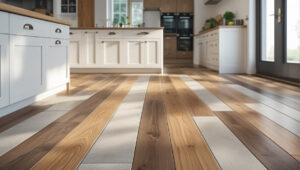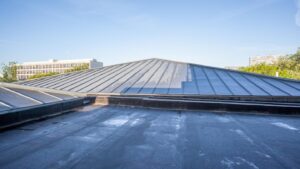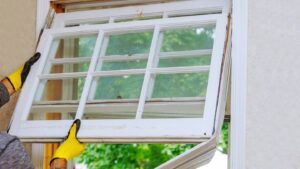In the sweltering heat of Florida, homeowners are always on the lookout for ways to reduce energy bills and keep their homes comfortable year-round. One of the most effective strategies to achieve this is upgrading to metal roofing. Known for its durability, longevity, and reflective properties, metal roofing in Florida is becoming the go-to choice for those seeking energy-efficient roofing solutions. This article explores how metal roofs contribute to energy savings, their specific advantages in Florida’s climate, and what homeowners should consider when making the switch.
Understanding the Energy-Saving Potential of Metal Roofing
The primary reason metal roofing is considered energy-efficient lies in its ability to reflect solar radiation. Traditional roofing materials, like asphalt shingles, tend to absorb heat. This results in higher indoor temperatures and more strain on cooling systems. Reflective metal roofing in Florida, on the other hand, deflects much of the sun’s rays, significantly reducing heat gain.
In fact, cool metal roofs in Florida can reduce roof surface temperatures by up to 50°F compared to conventional roofing materials. This reduction leads directly to lower indoor temperatures and, consequently, decreased reliance on air conditioning systems.
Additionally, many metal roofs are coated with specialized Energy Star-rated finishes that further enhance their reflective properties, making them one of the most energy-saving roofing materials available on the market.
Why Metal Roofing Is Ideal for Florida’s Climate
Florida’s climate presents unique challenges, including intense UV exposure, frequent thunderstorms, high humidity, and the ever-present risk of hurricanes. A metal roof in Florida offers several advantages that make it especially suitable for these conditions.
Firstly, metal roofs are built to withstand wind gusts up to 140 mph or more, which makes them a reliable choice for homes located in hurricane-prone areas. Secondly, their resistance to mold, mildew, and rust ensures longevity in Florida’s humid environment.
More importantly, because Florida experiences extreme heat during much of the year, the energy efficiency of metal roofs directly contributes to more comfortable indoor temperatures. By keeping heat out, metal roofs reduce the need for constant air conditioning, which can result in significant utility bill savings.
Insulation and Metal Roofing: A Powerful Duo
While reflectivity is essential, proper insulation is equally crucial to maximizing energy savings. Metal roof insulation in Florida enhances a roof’s ability to prevent thermal transfer from the outside in.
Many modern metal roofing systems come equipped with integrated insulation layers or can be installed over rigid foam insulation, radiant barriers, or fiberglass batting. These layers help regulate indoor temperatures more effectively and prevent cool air from escaping during the summer.
When paired with attic ventilation systems, insulated metal roofs create a powerful buffer between the harsh outdoor climate and the conditioned air inside your home. This is why energy efficient homes in Florida often include a well-insulated metal roof as a central component.
Comparing Metal Roofs to Shingle Roofs for Energy Savings
One of the most common questions homeowners ask is how metal roofs compare to asphalt shingles in terms of energy efficiency. The answer lies in understanding how each material reacts to heat.
Asphalt shingles absorb a large portion of solar energy, which is then transferred into the attic and living spaces. This absorption raises the internal temperature, causing your HVAC system to work harder.
Metal roofs, on the other hand, are highly reflective and emit absorbed heat quickly. This dual capability—reflecting and emitting heat—results in significantly less thermal transfer.
Moreover, metal roofs vs shingles in energy savings show a clear winner when examined over time. Though metal roofing systems may cost more upfront, their energy efficiency can lead to long-term cost savings and a faster return on investment, especially in a hot climate like Florida
Long-Term Cost Benefits of Metal Roofing
Many homeowners initially hesitate to invest in metal roofing due to the higher upfront cost. However, this expense is often offset by long-term benefits.
Florida metal roof energy savings can reduce cooling costs by 10–25% annually, depending on home size, insulation quality, and local energy rates. Additionally, the lifespan of metal roofs—typically 40 to 70 years—far exceeds that of traditional asphalt shingles, which need replacing every 15 to 20 years.
Over time, these benefits add up. Not only do homeowners save on energy bills, but they also avoid the repeated costs of roof replacement and frequent maintenance. Additionally, many insurance companies offer premium discounts for metal roofing due to its durability and fire resistance.
Eco-Friendly Roofing and Sustainability
Environmental impact is another important factor for many Florida homeowners. Metal roofing is often made from recycled materials and is 100% recyclable at the end of its life, making it one of the most eco-friendly roofing options available.
Additionally, because metal roofs reflect sunlight and reduce heat absorption, they help lower urban heat island effects, contributing to cooler communities.
Choosing energy-efficient roofing options like metal doesn’t just benefit individual homeowners—it also supports a more sustainable and environmentally responsible construction industry.
Choosing the Best Metal Roofing for Florida Homes
There are several types of metal roofing materials suitable for Florida, including aluminum, steel, copper, and zinc. Among these, aluminum is often the top choice due to its resistance to rust and corrosion—critical features in humid, salt-air environments common throughout the state.
Color and finish also play a vital role in energy efficiency. Lighter-colored metal roofs, or those coated with high-reflectance paint, are best for maximizing solar reflection. Opting for Energy Star-certified roofing products ensures that the materials meet government standards for efficiency.
Working with an experienced contractor who understands Florida roofing for hot climates is essential. A professional can help you choose the best metal roof for Florida climate conditions based on your specific location, roof design, and budget.
What to Expect During a Metal Roof Installation
The process of installing a metal roof can vary depending on the condition of your existing roof. In many cases, metal panels can be installed directly over the current roofing material, reducing labor and disposal costs.
Installation typically involves:
- Inspection of the existing roof structure
- Laying of insulation and moisture barriers
- Attachment of metal panels or shingles
- Sealing and flashing around joints and penetrations
The process usually takes less time than a full roof tear-off and replacement, but it’s important to work with licensed professionals who follow Florida’s strict building codes.
Conclusion: Investing in Energy Efficiency for the Long Term
Choosing a metal roof in Florida is more than just an aesthetic or structural upgrade—it’s a strategic decision that directly impacts your energy bills, indoor comfort, and long-term home value. With its high reflectivity, durable materials, and compatibility with insulation, metal roofing provides unmatched energy efficiency in Florida’s challenging climate.
Whether you’re looking to reduce your cooling costs, build a more sustainable home, or make a smart long-term investment, a metal roof is a wise choice. And with the right installation and materials, the savings can begin immediately.
Ready to Upgrade to an Energy-Efficient Metal Roof?
At Double T Construction & Roofing, we specialize in high-performance roofing solutions designed for Florida’s unique environment. Our team of experienced professionals can help you choose the perfect metal roofing system to maximize your home’s energy savings while boosting its durability and curb appeal.
Contact Double T Construction & Roofing today to schedule your consultation and take the first step toward a cooler, more efficient home.









